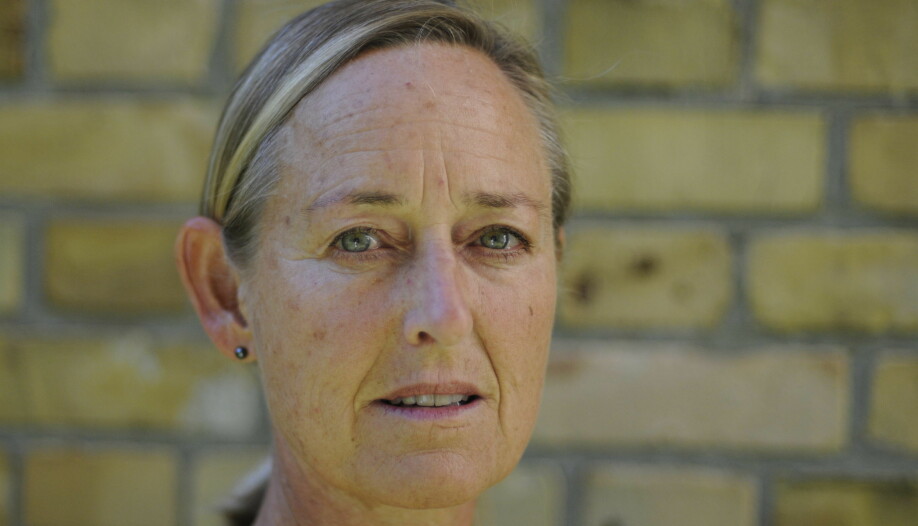
What do teachers need to feel confident about addressing sexual violence with students?
New perspectives on school leadership and solutions in teacher education and the school curriculum are what’s needed, says the researcher.
Silence prevails in the classroom.
Teachers – the adults who are with children for many hours a day – feel insecure. They don’t think they know enough to tackle the topic. They’re afraid of the reactions they might get if they bring it up, both from students and parents.
Sexual violence is rarely addressed when the competence isn’t there and emotions take over, says Beate Goldschmidt-Gjerløw, a researcher at the University of Agder.
She doesn’t blame individual teachers.
“This is a problem that needs new perspectives for school leadership and requires solutions in teacher education and the curriculum,” she says.
Unable to handle the topic
In 2018, Goldschmidt-Gjerløw conducted a survey among 64 upper secondary social studies teachers. It revealed that teachers feel insecure.
“Sexual violence shouldn’t be a topic in social studies education. We (teachers) don’t have time to deal with the consequences.”
The statement comes from one of the teachers that Goldschmidt-Gjerløw interviewed for her survey.
The teacher is one of many who said that they don’t talk about sexual violence in the classroom at all, or only to a very small degree.

Some do dare
But some teachers do dare to go there.
In a new study, Goldschmidt-Gjerløw shows who these teachers are and why they feel able to take on the challenge.
She found both results that she expected and results that surprised her.
“I discovered that younger female teachers do the most teaching about sexual violence,” she says.
Goldschmidt-Gjerløw doesn’t think this is that strange. Sexual violence is something that impacts young women more than men.
But she found that the older female social studies teachers are, the less they address this topic. In fact, they are the ones who address sexual violence the least, including less often than their male colleagues.
“An important finding is that a generational shift is occurring. The fact that younger teachers generally teach about the issue more than older teachers do bodes well for future teaching about sexual violence,” she says.
The better educated, the less teaching
The researcher found that the better educated teachers are, the less they teach about sexual violence.
Goldschmidt-Gjerløw found this result surprising.
“When teachers specialize in a social science discipline for their master's degree, they gain cutting-edge expertise in a specific area. This area of expertise is what they stress in their teaching and not as much else. This could be one explanation,” she says.
Half a textbook page
The vast majority of the respondents who are taking part in her study say that their education hasn’t given them knowledge they would need to teach about sexual violence.
The most widely used high school textbook devotes only half a page of around 300 pages to the topic.
In addition, the curriculum has been unclear.
The new curriculum updates offer greater potential, she believes.
“Now at least there’s an explicit objective for students to learn about norms and values and laws related to the body, sexuality and boundaries,” Goldschmidt-Gjerløw says.
But she's also a little worried.
“The previous curriculum stated that crime and violence prevention should be discussed in the classroom. In the current curriculum, the concept of violence was completely removed from the text. So how are teachers supposed to interpret this?
School culture matters
One of the social studies teachers in the survey who taught the most on the topic was a man in his 60s, says Goldschmidt-Gjerløw.
“It turned out that the school where he worked focused a lot of attention on sexual violence, and the school leadership was dedicated to engaging with the topic. This was influential for him because he had colleagues to work with,” she says.
If a teacher is left alone with the responsibility, it can feel overwhelming. A lot of teachers will avoid teaching about the topic in that situation, she believes.
In her study, Goldschmidt-Gjerløw finds that school culture seems to be as important as teacher characteristics for whether a teacher addresses sexual violence.

Big responsibility to ignore topic
Siri Søftestad recognizes herself in the findings of Goldschmidt-Gjerløw's study. She has a doctorate in sexual violence and has worked on the topic for almost 30 years.
She believes that talking about sexual violence in class is a big responsibility.
“But it’s also a big responsibility not to. I'm not sure if the schools are aware of that,” she says.
She agrees with Goldschmidt-Gjerløw that sexual violence is something that teachers can’t address alone. It requires cooperation.
“You can’t just teach about sexual violence and drop the ball there. It’s highly probable that you have several students in the classroom who’ve borne the shame, guilt and threats alone for a long time. And they might ask you for help,” she says.
Teachers need to know what their responsibilities are and to have an overview of the available resources in the municipality.
“We have the greatest chance of success in helping victims of violence when there is a well-functioning collaboration between the school, child welfare services, the police and healthcare services,” Goldschmidt-Gjerløw says.
Leaders are responsible
Søftestad currently collaborates with the universities in Stavanger and Agder where she teaches students and professionals about the need to be aware of children and young people who are struggling, and how to address situations when they suspect something is wrong.
She has great faith that systematic training can expose such situations and help the victims. She believes that the responsibility for implementing a training programme should ideally be decided by municipalities’ leadership teams.
School leaders, not individual teachers, should be responsible for schoolwide competence development and good routines in this area as well.
“If teachers are to succeed, the school has to stand together. The teaching staff needs a school environment where they feel confident that they’ll receive help from others. Having teachers go through training together and developing clear action plans for cases of concern will raise the teaching quality significantly,” says Søftestad.
Can’t believe it
No researchers can say for sure how many youth have experienced sexual violence. A Norwegian study from 2016 shows that almost every third 18- to 19-year-old reported that they had experienced physical, sexual violence at some point in their lives.
Seventy-five percent of these assaults were committed by a person known to the victim.
Several reasons emerge for why we are unable to relate to this issue as a society, Søftestad believes.
“Vulnerable children learn quite early on that they have to keep this hidden. It can be due to shame, and some of them feel guilty. Many say they’ve been threatened,” she says.
Sometime we may have a hard time believing that this kind of violence occurs.
“People who sexually abuse children and young people are similar to us. They can be teachers, priests or football coaches. It can be difficult for us to believe that a well-liked person can also commit this kind of violence,” says Søftestad.
Putting a bomb under the silence
Søftestad believes that as long as we don’t talk about sexual violence, we signal to the children that this is difficult and something we can’t help them with.
“Keeping silent enables the perpetrator to continue violating. Research has shown that the average time from the first assault episode until it comes to light is 17 years. Children and young people thus carry this catastrophic secret alone for many years,” she says.
Author Kim Leine has written a book in which he shares that he was violated by his father.
Søftestad thinks the author has done a good job expressing why it’s so important to break the silence.
In an interview with the Norwegian newspaper Klassekampen in 2013, Leine said:
“Violence is driven by silence. As long as the silence lasts, the violence can last. If I wanted to get out of it, I had to be open about my own violence and the violence my father inflicted on me. I put a bomb under the silence."
Translated by: Ingrid P. Nuse.
Read the Norwegian version of this article on forskning.no.
Source:
Beate Goldschmidt-Gjerløw: Exploring Variation in Norwegian Social Science Teachers’ Practice Concerning Sexuality Education: Who Teachers Are Matters and So Does School Culture, Scandinavian Journal of Educational Research, Scandinavian Journal of Educational Research, January 2021.
































